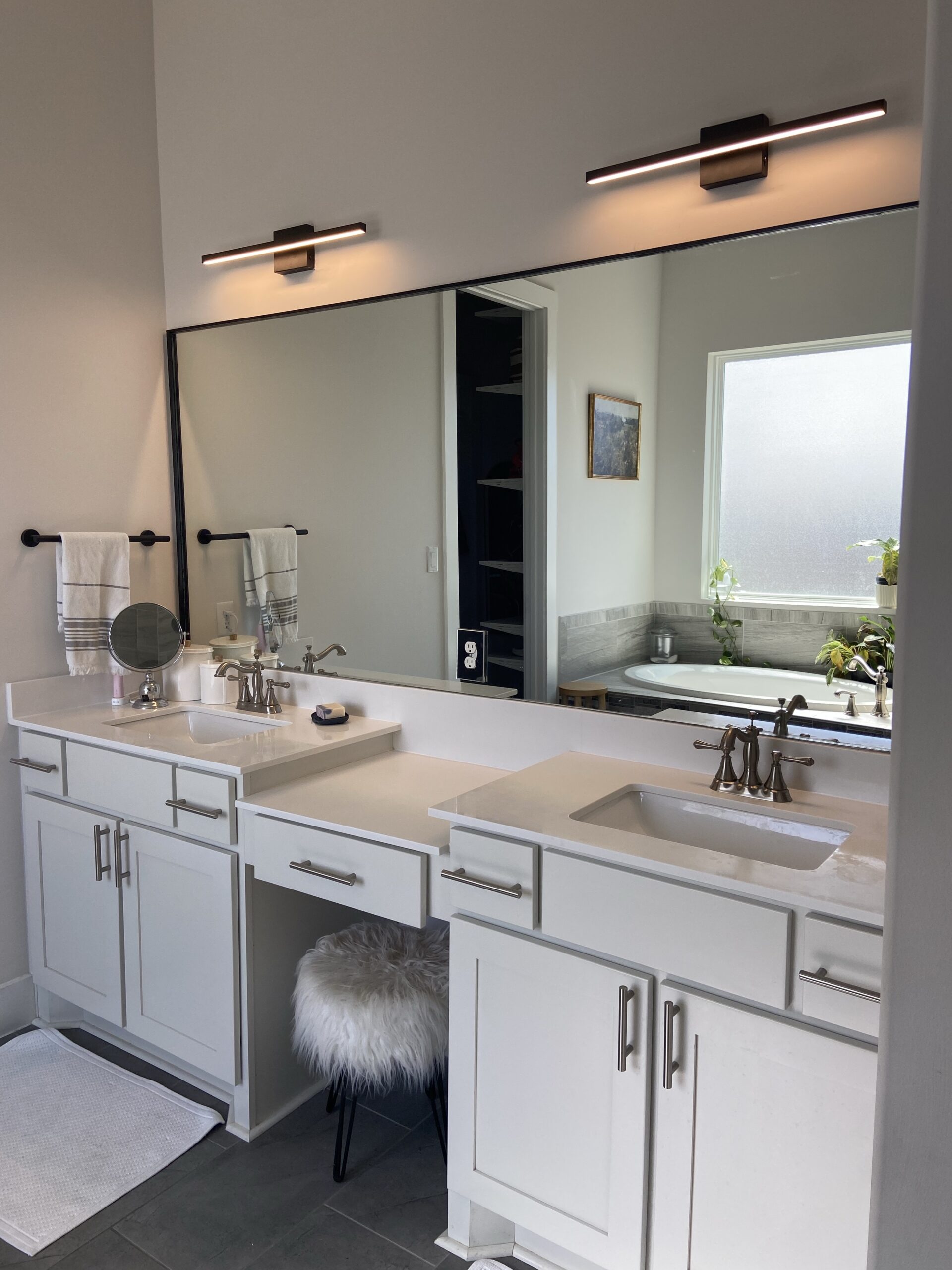At our last house, we hired a big name closet storage company to come in and redo our master closet. We spent a ridiculous amount on built-ins for basically particle board. For our new house I knew we needed drawer storage in our Master Bedroom closet but sadly it was not in our budget. I challenged myself to think outside the box or closet in this case! I came up with a plan to build my own storage! Follow my DIY built-in Closet Organizers guide to help make your life and your closet a little more organized.
Materials:
- 4 IKEA Rast 3 Drawer Dressers
- Paint
- Decorative Drawer Pulls
- Trim
- Nail Gun
- Brackets (8)
- Wood
- Peel and Stick Wallpaper
- Caulk
- Full Length Mirror
Simplifying the Project
Instead of building everything from scratch I found inexpensive three drawer wood dressers from Ikea of all places. The Rast 3 drawer dresser from Ikea is only $39.99 per dresser.
I wanted to build a built-in dresser for myself and my husband so I ordered 4 Rast 3 Drawer Dressers(2 dressers for each person)
I do not live near an IKEA so I ordered the dressers online and had them shipped to me. IKEA offers reasonable shipping, I had all of the dressers shipped to me for a flat rate of $9.99.
Accessories
The Rast 3 drawer dressers are pretty plain. I decided to paint the dressers with a gray paint I had leftover from another project. I love to utilize the paints and stains I already have on hand to help save money.
Amazon had some really cute, really inexpensive crystal drawer pulls that were perfect for my closest renovation.

I got 25 glass drawer pulls for $15.25. They are cute and inexpensive, which fit my project perfectly.
Getting Started
First, start by assembling all four dressers. Once the dressers have been assembled, it is time to paint. Paint each dresser with the paint of your choosing.
After everything is dry, make sure the drawers have been removed and attach the bottom dressers to the wall using the support strap that is included with the dresser.

Stack the second dresser on top of the first dresser and attach it to the wall with the provided support strap.
Attach the top dresser to the bottom dresser using 4, 2 inch brackets (2 on each side). These brackets will help keep the dresser stabilized.

Once the dressers were in place, I attached a piece of decorative trim to the gap between the two dressers to give it a more customized look
Using a nail gun, I attached a piece of wood to each side of the dresser. I decided to run the wood on each side all the way up to our existing closet shelf. Running the wood up the side gives the built-in dresser a shelf to place belongings.
I added trim to the wall along each side of the unit using a nail gun. After all of the trim pieces were in place I caulked and touched up paint on the unit.

I assembled the second built-in unit using the guide above.

I had left over Peel and Stick Wallpaper from my Pantry Renovation and Reorganization on a Budget, so I decided to incorporate it into my closet renovation.
I used the Buffalo Plaid patterned Peel and Stick Wallpaper to line the sides of the built-ins and the back wall behind the unit.


I decided to add a full length mirror to the built-in unit. Target had the perfect mirror for $16.99. I attached the mirror to the built-in dressers with Command Strips.

These DIY built-in Closet Organizers cost less than $300 total and completely changed the functionality of our space.


































































